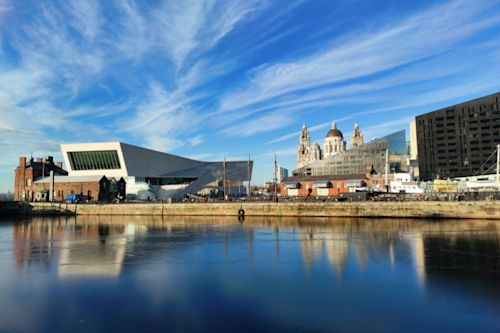The Jetsons, the 1960s futurist cartoon that was made in the US, depicted the namesake family living in Skypad Apartment in the year 2062, in a city called Orbit. The family of four — and their dog — enjoyed a leisurely life in a smart home, complete with a robot maid, flying cars, and other whimsical inventions. At a time when millions aspired to live in one of the exponentially growing suburbs,The Jetsons'depiction of a well-to-do family living in a multifamily house in the middle of a city might have been an outlandish idea for many. However, it turns out that the cartoon’s prediction about the future wasn’t wholly inaccurate.
Since the socio-economic transformations following the 2008 financial crisis, demand for multifamily housing continues to rise and remains robust. As people in advanced economies leave the suburbs in favor of cities, there was a 143 percent increase in investment volume in multifamily housing within Europe between 2010 and 2016. As 70 million Europeans are expected to move to city centers in the next 30 years, the demand will likely keep rising. Similarly, The US National Apartment Association recently reported that they will need about 4.6 million new multifamily units by 2030 to meet the demand.
Unstoppable Rise of Smart Homes

Digitization is causing sweeping and large-scale transformations in public, commercial, and private lives. As digital technologies and automation disrupt all walks of life, day-to-day experience in a multifamily property is no exception.
InThe Jetsons, AI technologies are booming, helping the Skypad Apartment’s residents to automate their household chores. This echoes the ongoing digitization trends for multifamily living. From intelligent light bulbs to connected washing machines, automation penetrates into the architecture of daily life.
It isn’t surprising that the value of the global demand for the home automation market is forecast to jump from USD 48 billion in 2018 to a whopping USD 102 billion in 2025. Key drivers of this growth are the evolving consumer preferences to connect entertainment, safety & security, lighting, and HVAC.
Even though the most advanced smart homes may not be the norm for the masses, the technologies that make a multifamily house smart, keep evolving, simplifying and becoming more accessible. Coupled with the building of millions of new multifamily housing complexes worldwide, it’s only a matter of time until the majority of houses are fully or partially smart and automated.
Digital Architecture to Unleash the Benefits of Multifamily Houses
Connectivity is the pillar of smart homes. Much like an actual pillar, connectivity must be planned and executed to fit the exact architectural needs: Too many pillars will overwhelm the design of a building and make it inefficient. Likewise, haphazard connectivity between different systems within a complex can lead to inefficiencies and confusion, defeating the purpose of automation.
Hence, the multifamily houses benefit from a digital architecture that consolidates all automated tasks. A centralized digital solution is currently an app which sits on your mobile device, which can function as a cloud-based access control system potentially pared with a solutions aggregator of other ‘devices’ such as thermostats, appliances and leak detectors. Multifamily complexes with these digital features not only enhance safety and comfort for the residents but also add property and operational value to people who build and sell them.
People who live in digitized multifamily complexes also report a higher quality of life. One survey found that 86 percent of millennial renters and 65 percent of baby boomer renters were willing to pay more for an automated unit. Additionally, when smart devices such as thermostats and lighting are managed via a centralized app, there is more control of utility usage, leading to cost and budgetary savings. Ultimately the digitization of multifamily complexes lowers the costs and increases the net operating income for owners.
Technology to Assist Changing Consumer Habits

All around the world, thanks to rising connectivity, consumer habits are rapidly shifting. It’s no longer just the postman and the odd neighbors that knock one’s door. Orders from online delivery services are at an all-time high. Throughout 2020 alone, traffic at the top online retailers jumped by 125 percent. Every day, these retailers deliver millions of packages to homes. Moreover, thanks to digitization, essential services such as food delivery, taxi, cleaning, child, or pet care are more accessible than ever.
As cloud-based access control apps can be integrated with these service providers, multifamily houses can respond to these changing consumer habits by allowing the residents to outsource these tasks.
In a high-traffic building frequented by delivery or housekeeping services, cloud-based access control apps help manage security concerns.
Residents can provide a digital key to authorize service providers’ entrances, but revoke the access whenever needed. All leaving a footprint for future auditing, if needed. All in all, in addition to the no-hassle entry for the residents, a centralized digital architecture enables communities to better monitor and manage vendor and visitor access to an apartment’s units and amenity spaces. This saves time and effort for both residents and visitors, without compromising security.
(It’s too badThe Jetsons’didn’t have an app as such in their multi-family complex. If they did, the family could’ve hired a regular dog-walker for Astro instead of making him exercise on the high-tech treadmill at home!)
Digitized Multifamily Houses For Stronger Communities

As cities are increasingly becoming more crowded and digitization soars, it’s not uncommon for urban-dwellers to experience a sense of loss of community connection. However, when the residents of multifamily complexes use the right solutions, often the opposite is true. There’s nothing like security concerns to dampen a community’s spirit. Especially if residents of a large complex don’t know one another, the sense of unease and mistrust can be higher. One study found that 63 percent of residents would move out of an apartment due to poor security.
While all-in-one digital solutions provide advanced security levels, they are also efficient community management tools. Unlike flyers and brochures that pile up in the bin without ever getting noticed, a digital message board can deliver the most important notifications quickly and efficiently. In these uncertain times, the convenience of connecting with neighbors will foster a much-needed sense of community. Using a community-based app, residents of a multifamily housing complex can discover local businesses, keep up to date with neighbors’ lives, and participate in community events.
Unlike in The Jetsons, there are still no flying cars or jetpacks (although we are now seeing jetpacks becoming available on the internet- the future is now..) However, many of the technologies that were in the candy-colored cartoon for mere entertainment value are already maturing (like jetpacks!). From robot cleaners to smartphones, automation and digitization technologies are ushering a new era of connectivity, and a gulden age of convenience and security for multifamily houses is upon us.



